By making eco-friendly improvements in your home, you could save upwards of £300 a year on your bills and help cut carbon emissions. Here are 8 of the top energy efficiency jobs that you could get done in your home, with the help of a local tradesperson.
Looking for a quicker way to start saving energy and money? Nathan from INHOUSE Plumbing and Heating shares actionable advice that you can implement yourself ahead of winter.
8 green home improvements
1. Energy-efficient doors
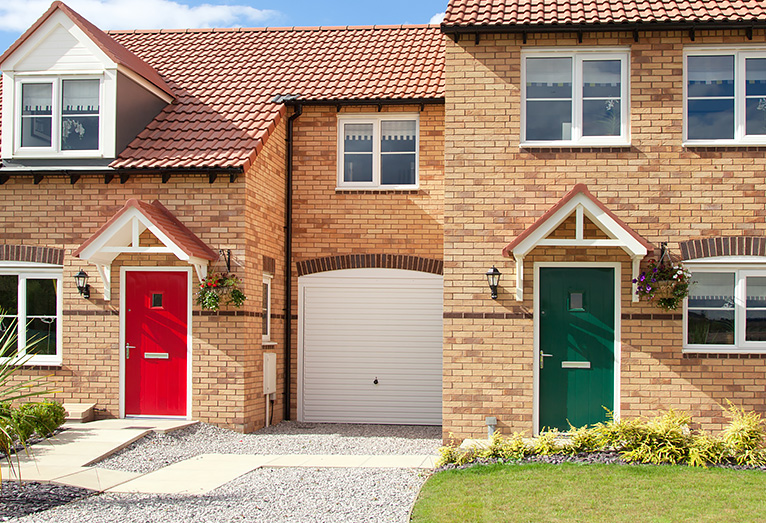
A draughty room is not only uncomfortable to sit in, but it can push your energy bills up as you’re likely to turn up the heating to feel more comfortable indoors. Energy-efficient doors offer great thermal insulation, keeping warm air in and preventing too much cold air from working its way inside.
Energy-efficient doors are compliant with the latest Part L building regulation, which contains strict requirements relating to the conservation of fuel and energy. So, you can be reassured that your door is expert approved. A local door fitter can help you find the best energy-efficient door for your home.
2. Solar thermal panels
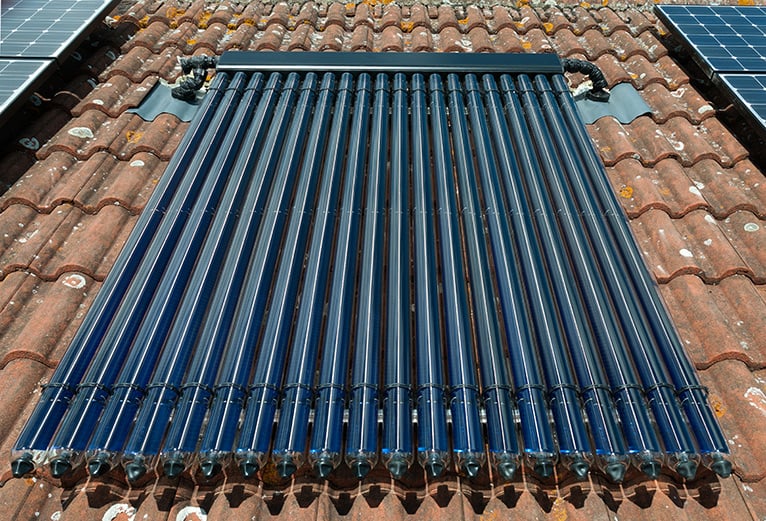
As a renewable energy source, solar thermal energy is great for the environment. Solar thermal panels use a little bit of electricity to capture the sun’s energy and use it for solar water heating. They can provide around half of your hot water use, according to Simple Energy Advice.
In the UK, solar panels are becoming more popular amongst homeowners – there are now over 1 million ‘solar houses’ across the nation! You don’t need to have sunny weather all year round for solar panels to work. They still work on cloudy days, too. However, solar panels won’t work to the best of their ability when they’re obstructed by trees, so keep this in mind when you’re deciding where to put them.
Furthermore, solar panels that are tilted at 15° or more can be cleaned by rain, according to the Energy Saving Trust, which improves their performance.
Once installed by a vetted heating engineer, solar panels last at least 25 years, making them a great investment for energy efficiency.
3. Double and triple glazing
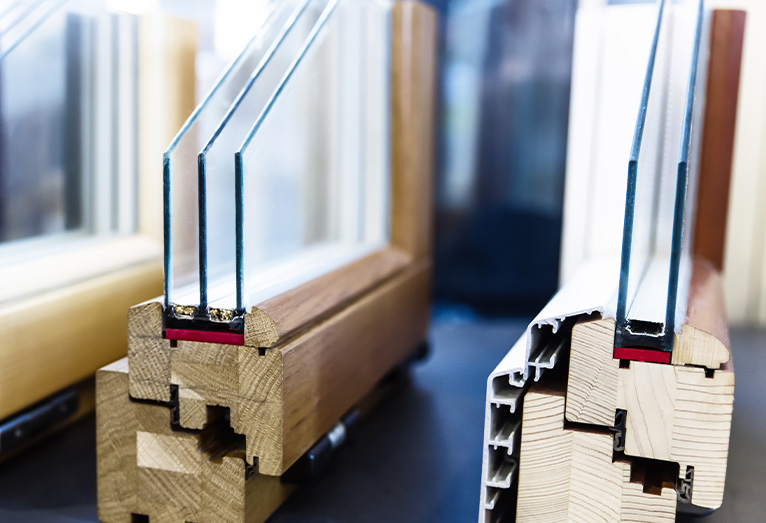
Double glazing is one of the UK’s most popular types of window, whilst triple glazing is also becoming more sought-after. Double glazed windows are made up of two panes of glass and triple glazed windows have three. Each pane of glass is separated by a gap of insulating air, which reduces the amount of heat that escapes from your house.
The key benefits for both styles are:
- Less heat loss – all new or replacement uPVC, timber or aluminium windows are required to have a minimum Window Energy Rating of ‘C’.
- Reduced noise pollution, as they’re more soundproof than single glazing.
- Increased home security – they’re thicker than single glazing, so are harder to break.
Double glazing or triple glazing?
Double glazing can be more effective in the areas of a house that are most exposed to the sun. So, it’s best to use triple glazing in the shadier areas of the house. Double glazing is cheaper to install yet triple glazing offers better savings on your heating bills over time, so you might be best off having a combination of both. A window fitter can advise you on this, as can our 2023 window replacement cost guide.
Request a quote today to get started.
4. Insulation
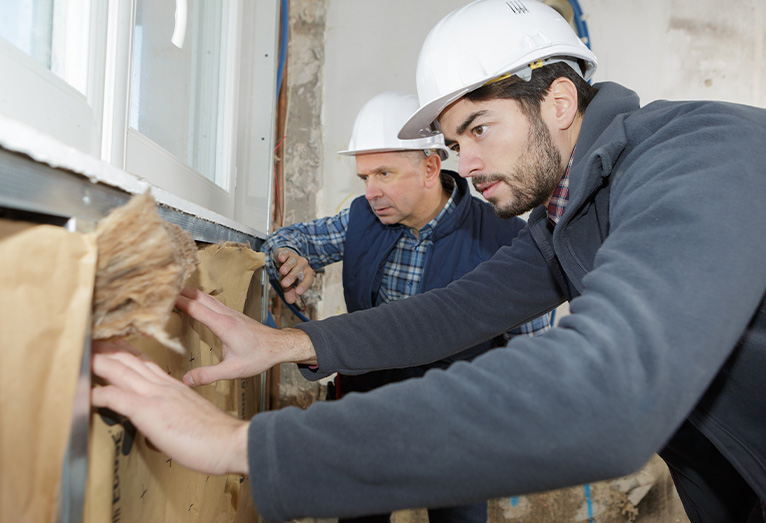
One third of all heat lost in homes goes through walls, and a quarter escapes through the roof. By installing insulation, you can improve your home’s energy efficiency and reduce your heating bill.
Wall insulation
If you’re interested in wall insulation, then you’ll want to find out what type of walls you have. There are two types of wall:
- Cavity walls, made up of two walls with a gap between them (the cavity). These are usually found in houses built after the 1990s.
- Solid walls, which have no cavity. These are typically found in houses built before the 1920s.
Wall insulation only takes around two hours to install, and you should be able to make back the cost of installation in five years at most, through your annual energy bill savings.
Roof or loft insulation
Roof/loft insulation is effective for 40 years and can cut your carbon dioxide output by up to 1,000 kg a year. it can also save you up to £415 a year in energy bills by creating a barrier, stopping heat that rises from the lower levels of your house from escaping.
Insulation also improves your home’s energy performance rating, which has a positive effect on its value when it’s time to sell. A thermal insulation specialist will be able to fit the best type of insulation for your home and budget.
For more information on loft insulation, read our 2023 loft insulation cost guide.
5. Smart heating controls

Smart heating controls are an increasingly popular smart technology tool amongst UK homeowners. They allow you to control and customise your heating with just a tap of your smartphone, tablet or other device.
Smart heating controls can easily help you to improve comfortability in your home and cut down on your energy bill by:
- Allowing you to create, manage and adjust your heating schedule as often as you like.
- Alerting you if you leave home but have forgotten to turn the heating off, so that you can quickly turn it off using an app.
- Spotting trends in how you use your heating and creating an appropriate heating schedule to fit your needs.
- Reacting to the weather through a weather-response function. This means that your heating will automatically adjust when it’s hotter or colder than usual, without you having to lift a finger.
- Control your heating room by room using zoning – this means that you won’t waste energy on heating every single room in the house when you’re only using one or two.
- Working with other smart home technology that you may already have, such as Amazon Alexa or Google Home. This will allow you to control your heating using your voice, for example.
A gas/heating engineer can discuss the different smart heating control systems with you, fit the system that you choose in your home and help you to connect it to your smartphone.
6. Heat pumps
Air source heat pumps (ASHPs)
A source of renewable energy, ASHPs work by absorbing heat from the outside air to heat your home and water. ASHPs can still extract heat even when the temperature is as low as -15°c!
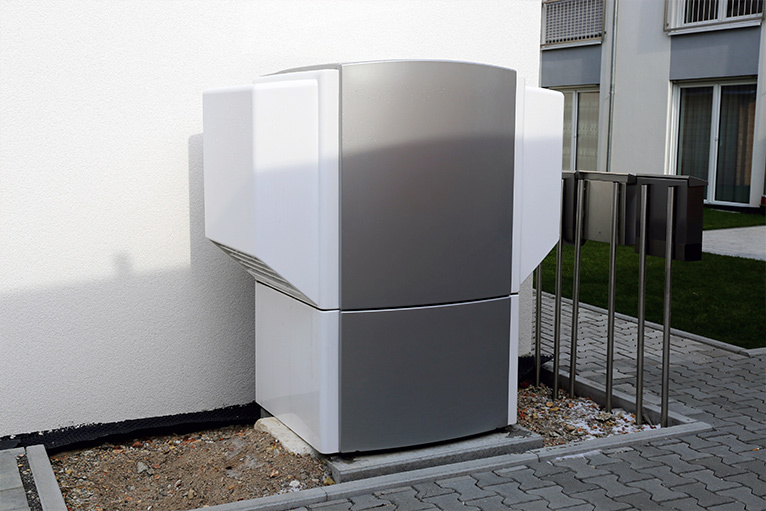
The most popular type of ASHP in the UK is the air-to-water heat pump. They work by absorbing heat from the outside air and transferring it to water. Then, the heat distributes around your home through your wet central heating system.
Air-to-water heat pumps work more efficiently at a lower temperature than a standard boiler system, which not only lowers your carbon emissions, but also cuts your heating bill.
Ground source heat pumps (GSHPs)
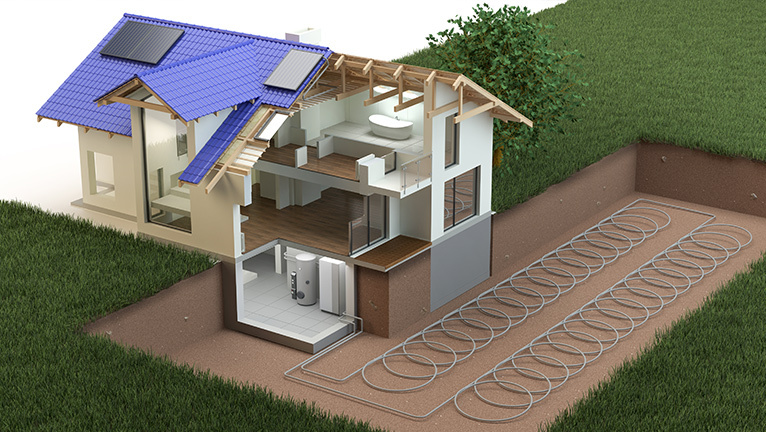
GSHPs extract heat from the ground through a ground loop (a loop of pipe) which is buried in your garden. Heat from the ground is absorbed into a mixture of water and antifreeze in the pipe, and then it goes through a heat exchanger into the heat pump. This fluid then heats your radiators, hot water, underfloor, or warm air heating systems.
ASHPs and GSHPs need less maintenance than a gas or oil boiler, and no fuel deliveries are required as they’re a renewable energy source. They also work more efficiently by delivering heat at a lower temperature over a longer period of time. A gas/heating engineer can evaluate which option is best for your home.
Find out more about how heat pumps can save you money in our blog post: Everything you need to know about heat pumps.
7. Draught proofing
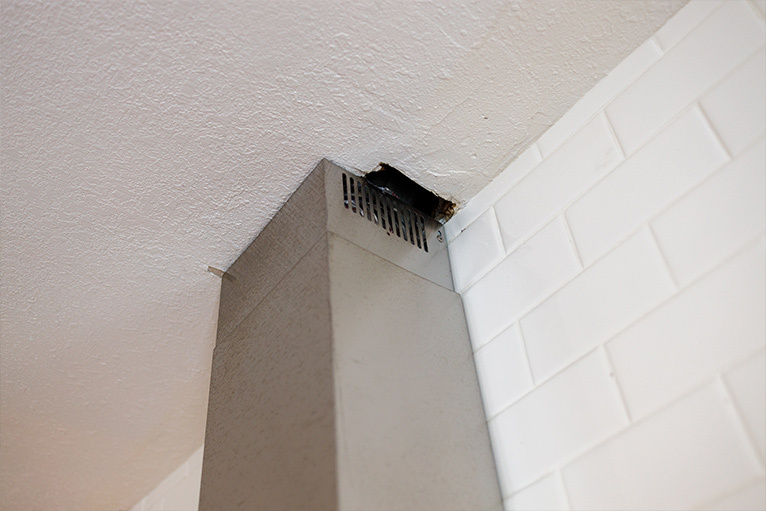
The average home loses up to 20% of its heat loss through uncovered gaps in and around the house, according to the National Insulation Association. Some of these gaps go unspotted in our day-to-day lives – they can be found in and around pipework, loft hatches, skirting boards and even the cat flap, for example.
By having your home draught proofed, you can also stop noise, dirt and other materials that enter your home through those little gaps. A handyperson can spot and seal up any gaps to protect your home.
8. Thermostats and other heating controls
Zone controls
Zoned heating systems allow you to set and control the heating in different areas of your house. Each ‘zone’ is connected to the same boiler, but they each have their own thermostat.
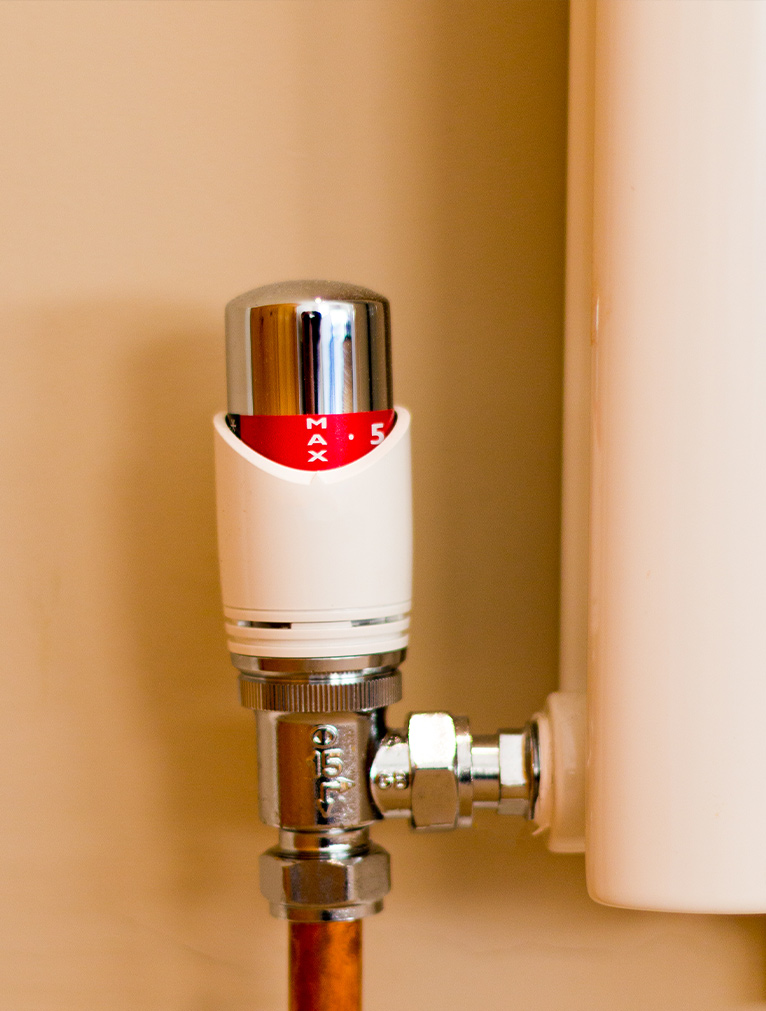
Thermostatic radiator valves (TRVs)
Found on the side of your radiator, TRVs control the temperature of different rooms in different ‘zones’ of your house, by adjusting the flow of water going into your radiator. When the room temperature changes, a capsule in the valve contracts or expands to adjust the temperature of the radiator to the change.
TRVs offer a simple solution to stopping individual rooms from overheating or going cold.
Delayed start thermostat
Many central heating systems have set times for when the heating comes on. However, on days that are warmer than others, having the heating automatically turn on anyway wastes energy and money, by increasing your heating costs.
A delayed start thermostat automatically delays when the heating comes on if the room is already warm, reducing how long the heating is on during the day.
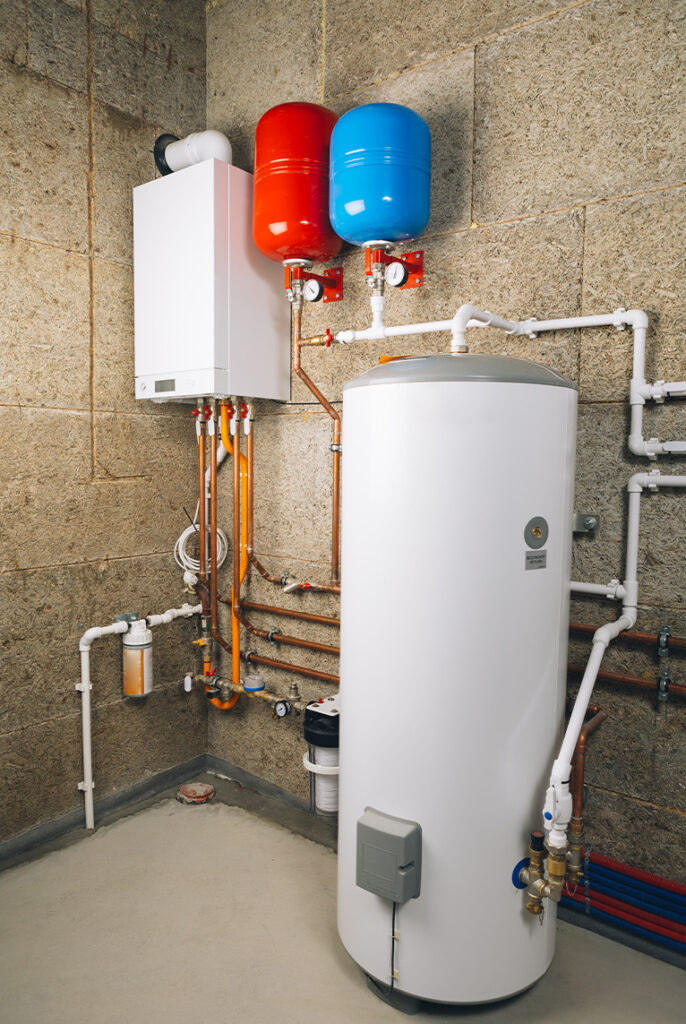
Hot water tank thermostats and insulation
Your hot water is kept in a hot water cylinder, which keeps it hot and ready for you to use. A thermostat allows you to set the temperature that you’d like your hot water to reach. Once the water reaches that temperature, the thermostat prevents it from exceeding it, as well as turning off the heat supply to stop energy being used unnecessarily.
Heat can be lost through an uninsulated hot water cylinder and the exposed pipes between the cylinder and boiler. Insulating your hot water cylinder is a quick way to save you upwards of £195 per year on your heating bill and cut up to 725kg off your carbon dioxide emissions, according to the Energy Saving Trust.
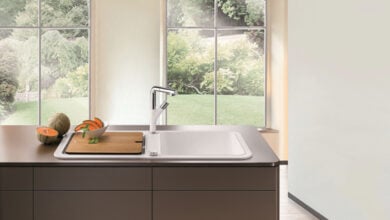



I would like to know more about this thank u
Hi Mary, you can find out everything that you need to know about the scheme on our Homeowner Advice Centre.
could I get a shower over a bath & cistern which uses less water?
Hi Y Sim, the government recently announced which green home improvements will be covered by the scheme and unfortunately, a new shower and cistern aren’t included. However, you may find that one of the approved home improvements can meet your needs – read the list of what’s covered by the scheme on our Homeowner Advice Centre.
Hi what is the loft room grant for and does it cover all cost I find it confusing as you said it won’t cover a loft conversion. We li e in a bungalow and I would like to be able to do some thing up there. What does it cover then thanks
Hi Tracy, you can get your loft insulated through the Green Homes Grant, which will reduce heat lost from your home. If you already have a loft conversion, then you may be interested in having some of the secondary measures installed in your loft, such as heating controls and double/triple glazing (where replacing single glazed windows). For a full list of what’s covered by the grant, check out our blog post – The government’s Green Homes Grant scheme: What homeowners need to know.
Hello Amina
Just to check to be sure that Solar panel for electricity, pcv? aren’t available on the scheme please.
Thanks very much
Hi Sylvia, only solar thermal panels are available through the Green Homes Grant, which can be used to provide around half of your hot water use.
I have a damp wall in my house below the front window. If I have the wall insulated will the damp issue be looked at and covered as well as part of the same job?
Hi Alison, repairing and treating damp would be covered by the Green Homes Grant in your situation, as it’s related to a green retrofit (your wall insulation). Hope this helps!
Hi Amina, please can ask a question on this? I have a conservatory which has a plastic roof, would the grant cover for converting this to a flat roof, it does have central heating in the conservatory but it still gets very cold in the winter.
Hi Steven, the government has confirmed that re-roofing won’t be covered by the Green Homes Grant, unfortunately. As your conservatory already has fixed heating, you may be interested in having insulation installed to help keep it warmer in the winter.
Hello. We are looking to get a loft conversions Are we able to apply for the grant vouchers to pay for things like the insulation? So not looking at covering the cost the whole conversion but just the relevant parts of the build related to ‘green’ issues
Hi Ben, yes you should be able to get a voucher for loft insulation, as loft insulation is covered by the grant as a primary measure. You can find the full list of eco home improvements that are covered by the Green Homes Grant here.